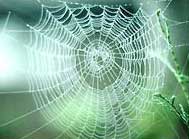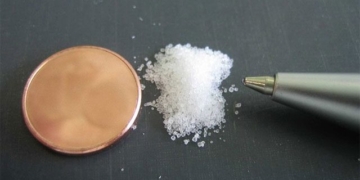 French scientists have been investigating the natural properties of spider silk, particularly its strength and torsion. They explore why a spider hanging onto its silk can remain completely still rather than spinning around like a climber on a rope.
French scientists have been investigating the natural properties of spider silk, particularly its strength and torsion. They explore why a spider hanging onto its silk can remain completely still rather than spinning around like a climber on a rope.
According to the journal Nature, researchers at the Laser Physics Laboratory at the University of Rennes have detailed various experiments they conducted to understand the characteristics of spider silk. Using a twisted pendulum connected to a thread attached to a weight equivalent to that of a spider, the researchers compared the dynamic responses of different types of fibers (copper, Kevlar, Nitinol) with a 90-degree twist.
While Kevlar (a synthetic material) exhibits elastic behavior with slight oscillations, copper fibers oscillate weakly but struggle to return to their original shape and are easily broken. Alloys like Nitinol also display similar properties but require heating to 90 degrees Celsius to revert to their original shape.
Only spider silk has the highest oscillation coefficient, independent of air resistance, maintaining its torsional properties and completely returning to its initial position. This material is known as “shape memory” and does not require external assistance such as heat or pressure to return to its original form.
According to Olivier Emile, one of the researchers, despite being very thin, spider silk is an incredibly durable material composed of proteins and amino acids. This 2-micron thick silk can bear an average weight of 1 gram, equivalent to a thread with a thickness of 1 to 2 mm supporting a load of 65 kilograms.



















































